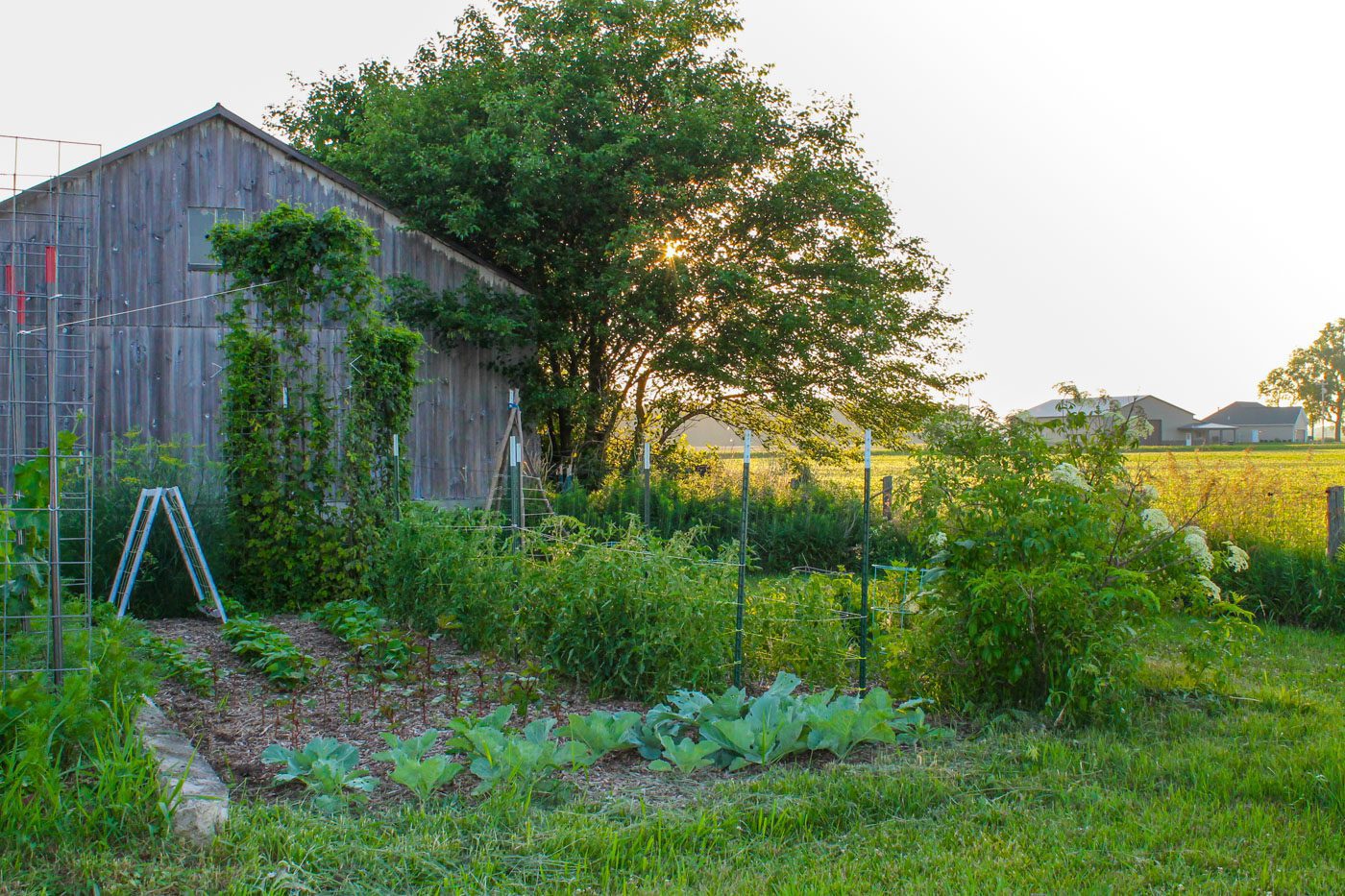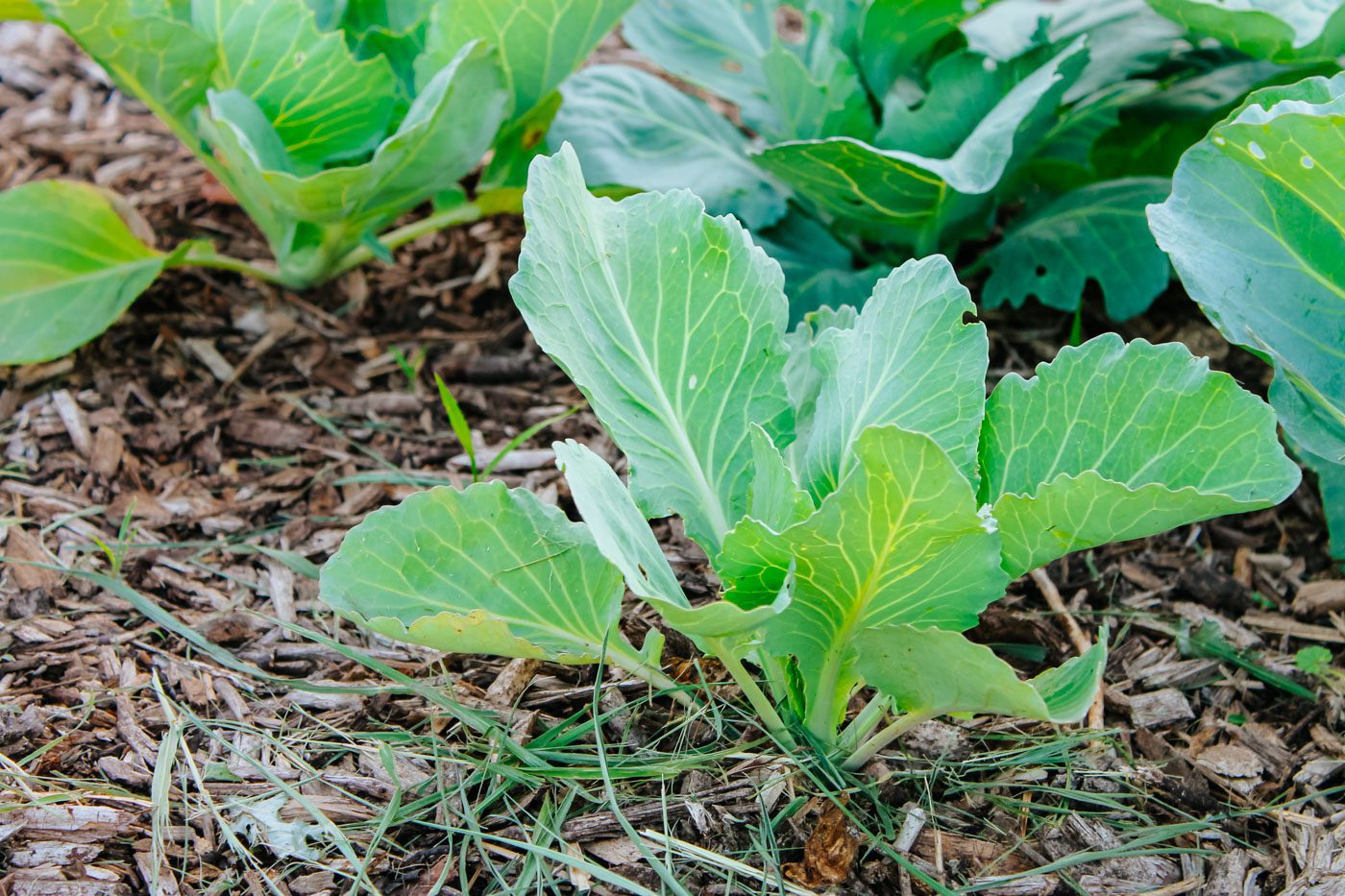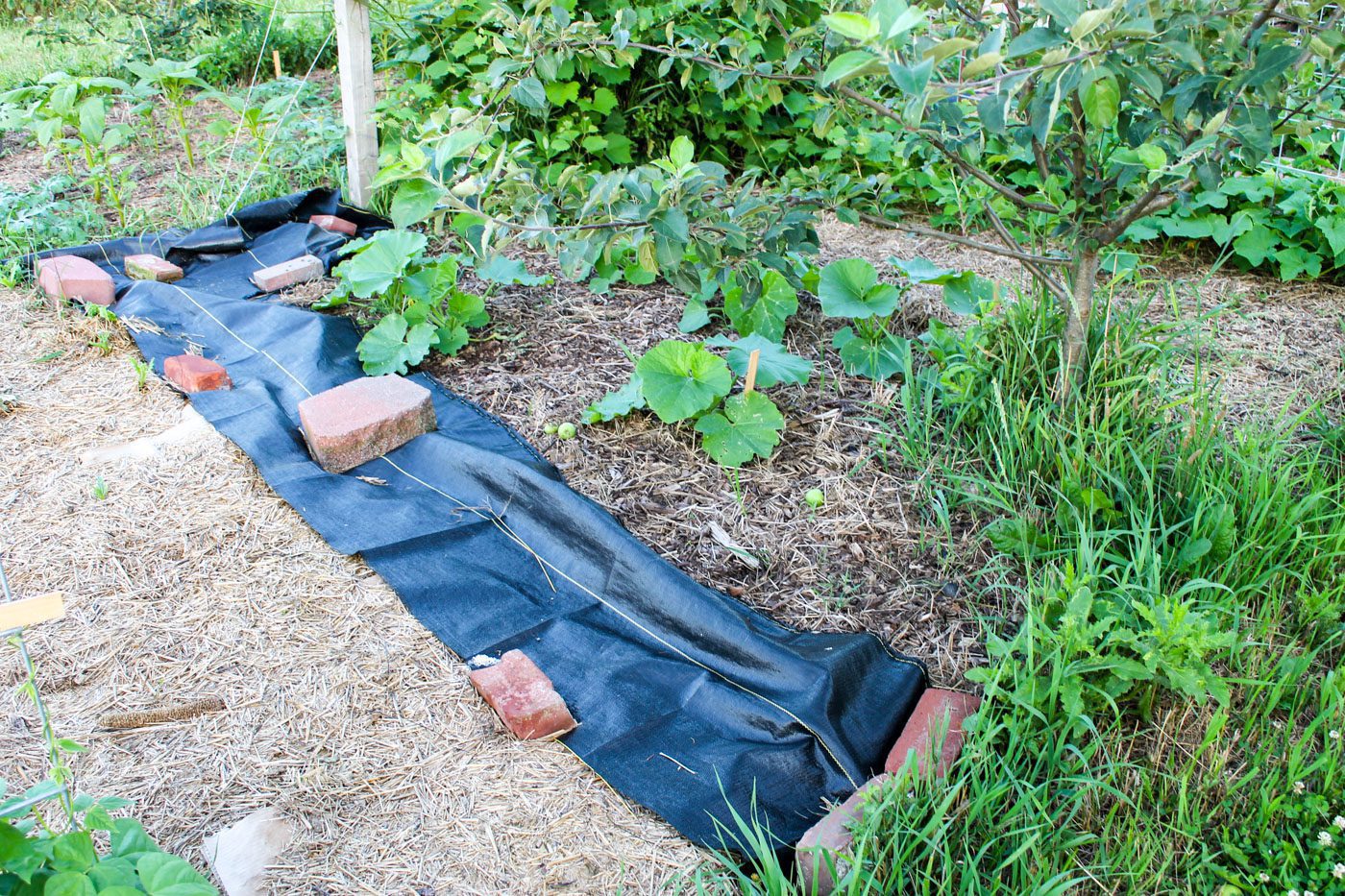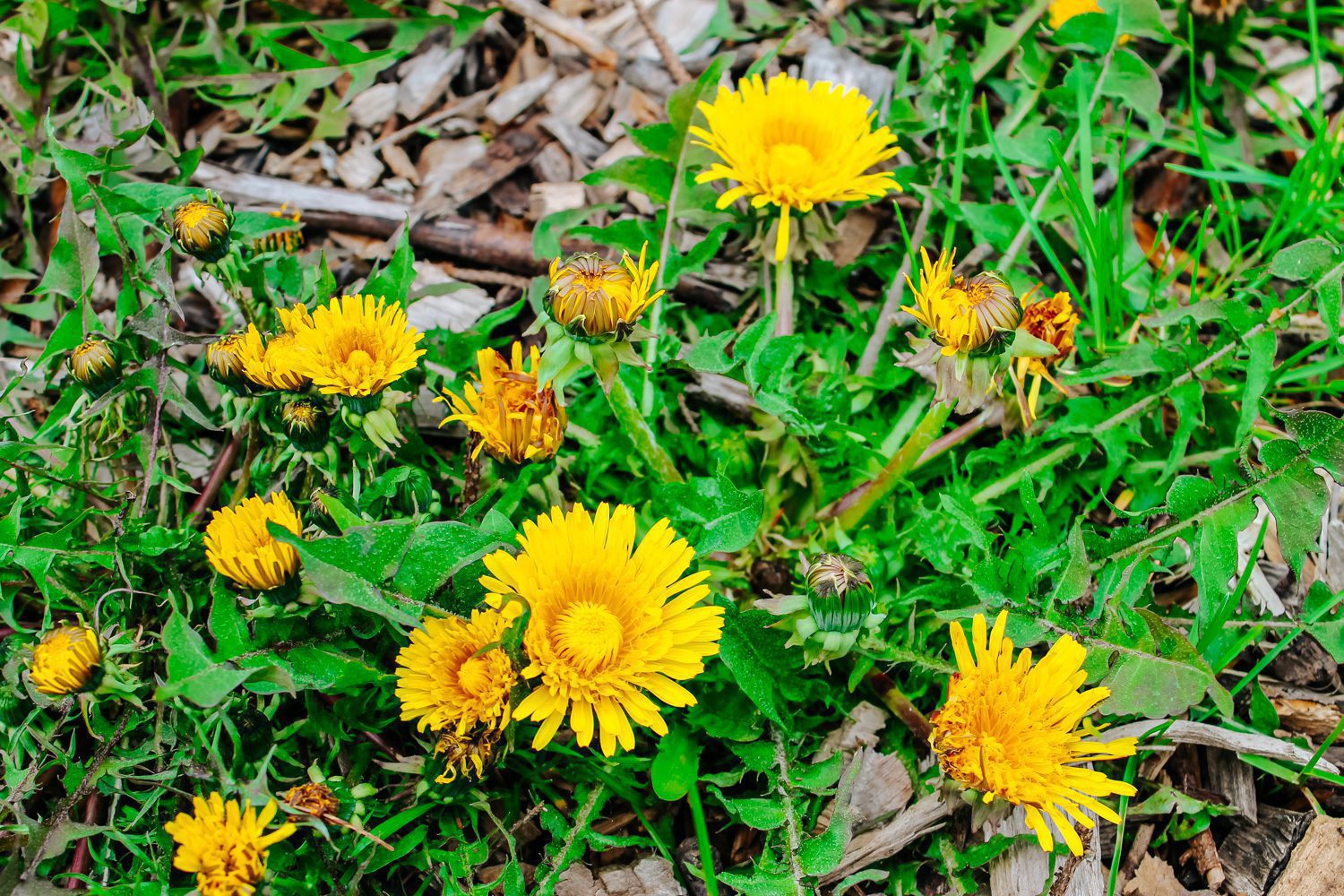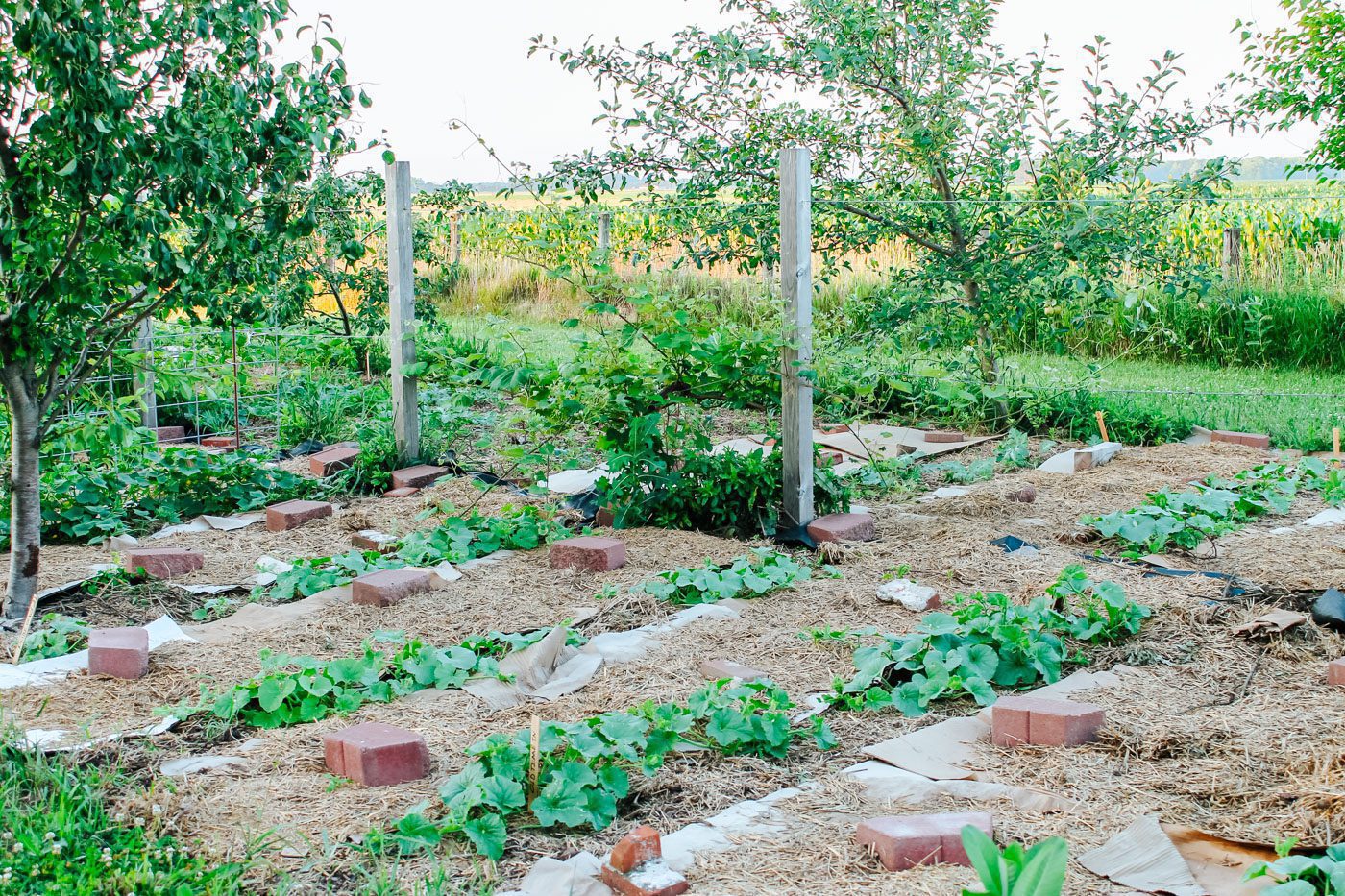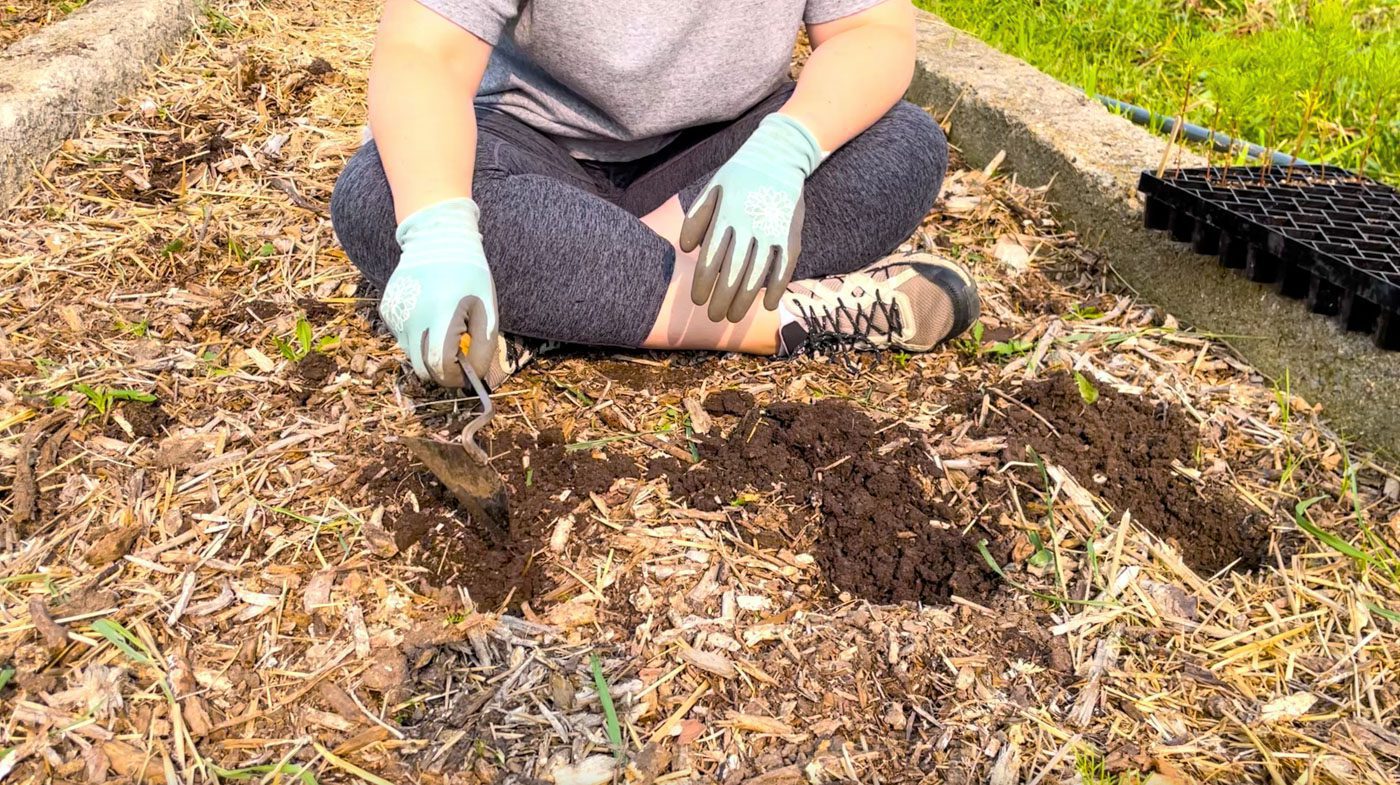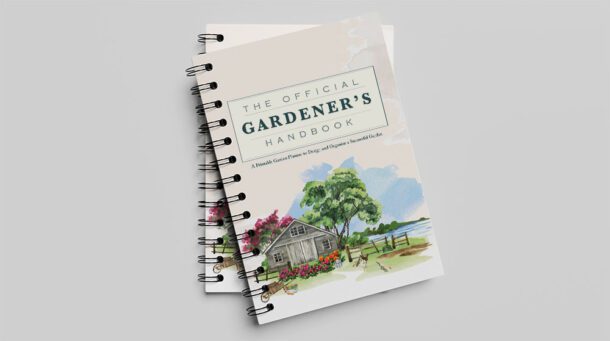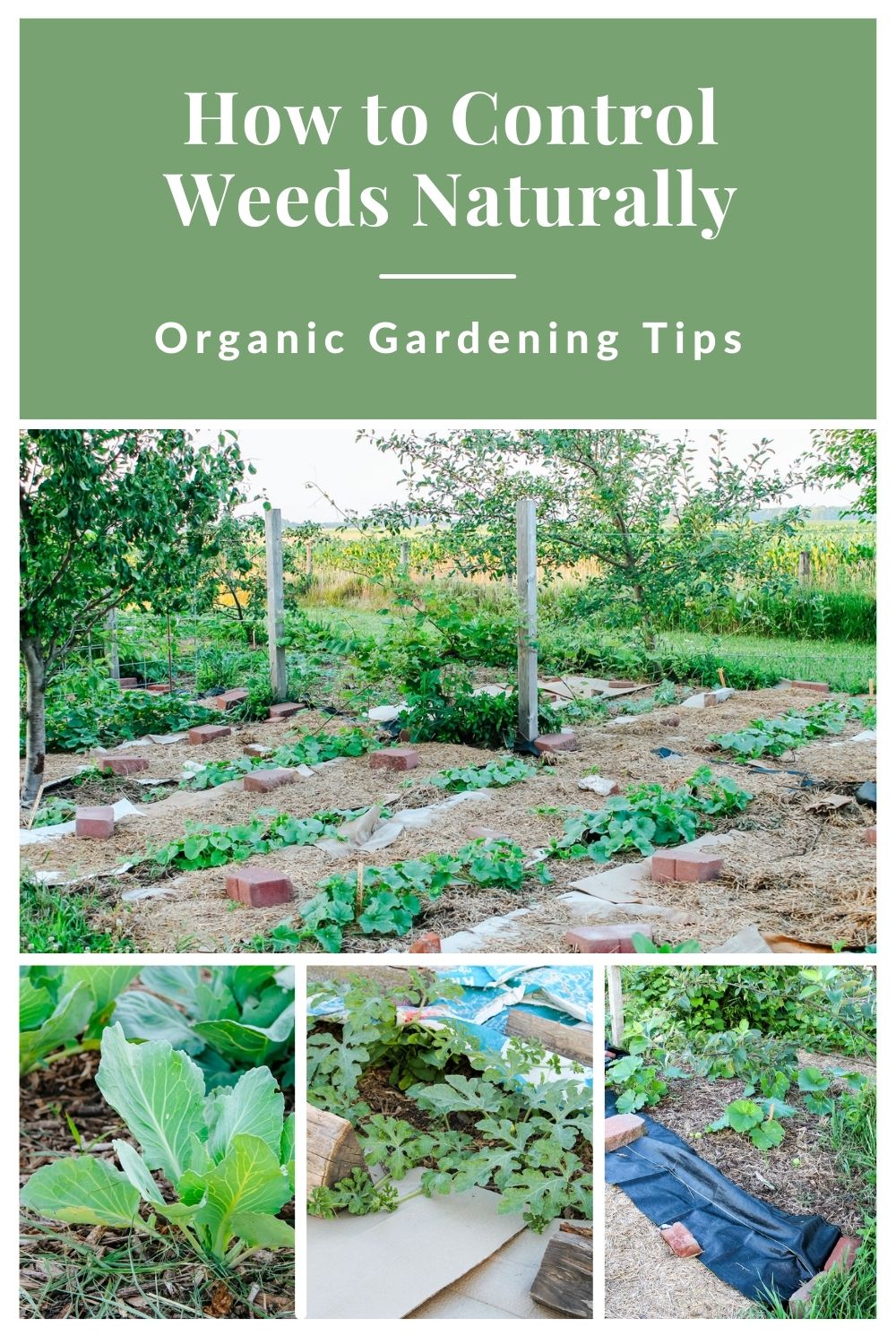Are you struggling with weeds in your garden? Is there a solution to control weeds without the use of toxic chemicals? Learn 8 effective ways to naturally control weeds while saving time and reducing gardening stress.
This post contains affiliate links, which means I make a small commission at no extra cost to you. In any case, I only link to products we actually use on our homestead and that I believe can truly benefit to you. See my full disclosure here.
Every gardening season comes with its challenges. Some years I battle a swarm of pests trying to devour my cabbages, while other years I fight blight on my tomatoes. This year we are dealing with cool temperatures and drought which is rare for our homestead in Ohio. Even though there can be countless complications, I stick with it because I know how important it is to our health (not to mention our pocketbook) that we grow organic food in our garden.
Depending on where you are located, your gardening troubles may be different than mine. One thing that we all share in common is weeds. Weeds, weeds, they are everywhere! And amazingly enough they seem unaffected by the lack of rain we have had. Funny how that works.
Throughout the seasons we have tried several ways to keep the weeds at bay. Some have worked beautifully while others just ended up in frustration. Today, I am here to share with you 8 natural weed control ideas that have proved to be successful within our garden.
Why Weed Control is Important
Weeds, big and small can be detrimental to a garden if left uncontrolled. By allowing weeds to prosper, they consume the resources the plants need such as light, water and nutrients. Unwanted weeds when permitted to grow can not only decrease yields come harvest time, they can also lessen crop quality. While this is only part of the story, the moral is that it’s important to catch those weeds early on in the season. Pull them out! Cover them with mulch! Just don’t allow them to gain a foothold in your garden.
Can Herbicides Be Harmful?
Chemicals including herbicides and pesticides are dangerous to humans, pets and livestock and cause havoc to your health, both physically and mentally. It is best to use natural methods for safe and effective weed control.
How to Get Rid of Weeds
Knowing your enemy is half the battle. By identifying the invasive weed in your garden, you can research how best to kill it. Sometimes a simple suppressant such as a layer of mulch can be enough to destroy it. While at other times you need something stronger such as plant fabric or an organic herbicide. I have come up with a list of solutions that have worked for us when it comes to weed control for vegetable gardens. Scroll below to continue reading.
How to Control Weeds Naturally
Is weed control without chemicals possible? Taking charge of weeds in your garden without commercial herbicides can be done. Here are 8 natural ways to get rid of pesky garden weeds.
1. Use Mulch
If you’re a long-time follower of WholeMade Homestead, you are likely aware that I am a huge fan of mulch. You see it all started with a truck load of wood chips and a video from Paul Gautschi. After a few successful seasons of using mulch on our garden, we knew wood chips were going to be our lifelong best friend.
Mulch can come in a variety of forms including grass clippings, hay and/or straw (make sure it isn’t not treated with Grazon), decomposing leaves or plant matter such as large comfrey leaves, wood chips and double ground mulch from trees like cedar, pine, oak, maple and more.
Mulch works as a suppressant. By adding a layer of mulch to your garden, you inevitably block the sunlight — no sun means no germination of weeds. A layer of mulch also helps to reduce the amount of watering and improves the soil over time as the mulch decomposes and releases nutrients into the soil.
For extra weed binding power, we like to add a layer of cardboard to our garden space then cover with a few inches of mulch. The combination of cardboard and mulch help to suffocate difficult weeds, making gardening just a bit easier. Now you can see why mulch is one of the best tools to prevent weeds.
2. Smother Weeds
If you want to take weed control for the garden to the next level, you’ll need to smother the weeds with material such as plastic ground cover or plant fabric. With a layer of weed control black plastic sheeting or quick-plant fabric, you will make certain that weeds will not get the light they need in order to grow. Neither will it be an optimal growing environment. As the sun shines down onto the black fabric, it will create an oven-like habitat, cooking the weeds from the heat of the sun.
Does weed control fabric work? Yes! We have used both the woven ground cover and the silage tarp from Farmers Friend and have been able to greatly reduce the time spent weeding the garden and the backyard orchard. Our garden fabric is held down by bricks to keep it from flying away — it is windy in our neck of the woods.
3. Use Homemade Weed Killer Spray
Sometimes no matter what you do, pesky weeds can get the better of you. Rather than using a harmful chemical weed killer spray, opt for a homemade version. Search online for a homemade weed killer recipe or inside your favorite gardening book, for a people and pet safe spray. Just make sure the information comes from a trusted resource and that you follow the instructions carefully because some DIY weed control methods are for garden beds while others are meant for landscaping, such as weeds found in the driveway or sidewalk cracks.
4. Keep Your Yard Mowed and Garden Edges Trimmed
Have you ever noticed weeds creeping around the edges of your garden? Our backyard garden is surrounded with a wire mesh fence to prevent our dogs and other critters from getting in. Weeds in all shapes and sizes gravitate to the garden, seeking the nutrient soil. To prevent the weeds from crossing over, we keep our lawn mowed and use a weed whacker to clean up the perimeter of the garden space.
5. Eat Them
Occasionally the weeds that you find to be a nuisance growing in your garden or lawn can actually be beneficial. Yes, you heard me, embrace those weeds!
There are a variety of weeds that can be used internally and externally to treat an array of ailments. For example, dandelion root can be used to help support a healthy digestive system. Dandelion can be used topically in homemade soaps and salves. Many like to use the flowers to make a dandelion jelly, although I’ve never personally tried it. Plantain, a common yard weed, works wonders to treat a bee sting. Yellow dock, clover, violets and prickly lettuce are just some of the many average weeds that can be used medically. If you’d like to learn more about how to use medicinal weeds, check out the HomeGrown Herbalist’s book.
6. Don’t Water Your Weeds
This idea may seem too simple. Weed control for a vegetable garden can be done by avoiding watering weeds? In some instances, yes.
But wait, it’s not as easy you one would think.
I don’t know how many times I’ve gone out to the garden to water it and sprayed water over the entire garden instead of directly watering the base of the plant. If you’re able to (because sometimes those big, bushy tomatoes want to spread their branches everywhere), watering only your desired plants, from the bottom can help deter weed growth.
7. Plant Close
Weed control in garden beds can be as simple as planting your starts thickly. Potatoes, cabbage, Russian kale, zucchini and green beans can be planted closely together to stop the invasion of weeds. Initially, when the plants are young, you may need pull a few weeds but as they grow tall and stretch out their large leaves, the space becomes too crowded for weeds to thrive.
8. Yank Them Out
Truth be told, after using all of the above, sometimes we still have to pull weeds in our garden. But much less so than we did prior to having a Back to Eden type of garden.
It is best to pull the weeds when they are young. Ground-ivy, also known as creeping Charlie can’t vine around my garden if I prevent them from spreading. Thistles can’t spread if I yank them from the ground when they are small. If you get to the weeds early enough, it will make the gardening season much easier overall. One of our favorite weed control equipment tools, especially in a wood chip style garden, is the Japanese Hand Hoe.
Sometimes there are wicked weeds such as bind weed or witchgrass (panicum capillare) that seem to stretch across the garden in a blink of an eye. I am certain their root system goes to the deep, dark depths, making them harder to pull. If you get a good soaking rain, pull those puppies out while the ground is still moist — easy peasy!
Lastly, remember never to let your weeds begin to flower or go to seed. Once they drop their seeds onto the ground, you’ll be battling them for years.
More Garden Tips & Tutorials
9 Benefits of Using Mulch in the Garden
How to Extend Your Growing Season
FREE Printable Garden Planner
The Gardener’s Handbook: Design and Organize a Successful Garden
Get the most out of your garden with the 31-page printable Gardener’s Handbook. Whether you’re planting a simple herb garden in the window sill of your kitchen, a stunning cut flower garden or a huge vegetable garden to feed your family year-around, a planner will help you stay organized and on track.

